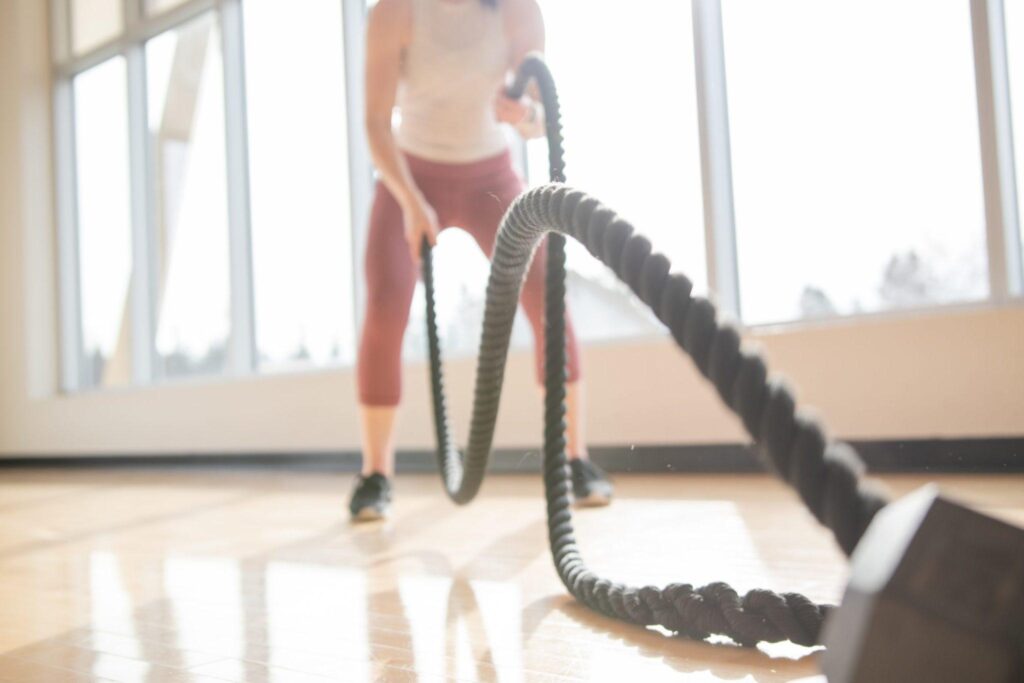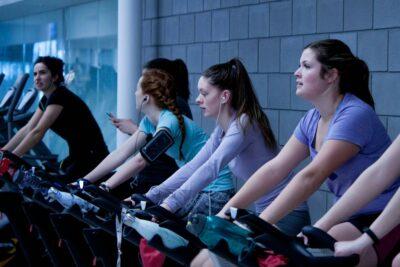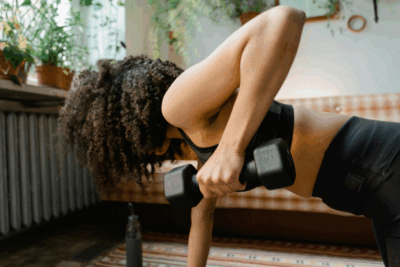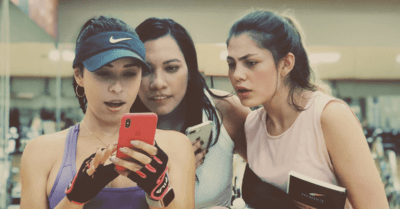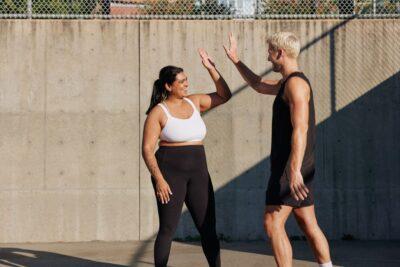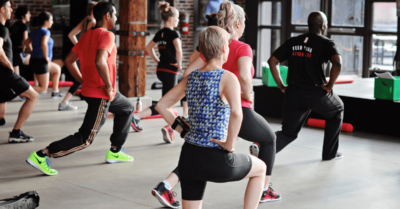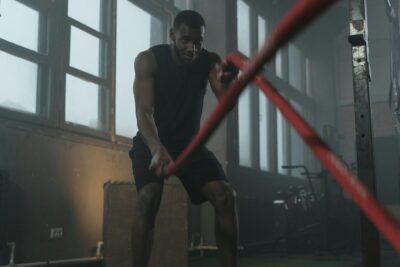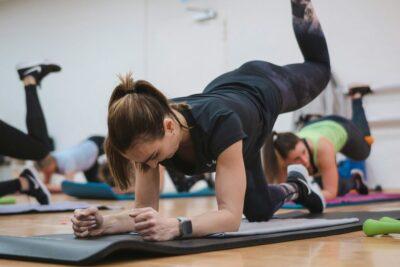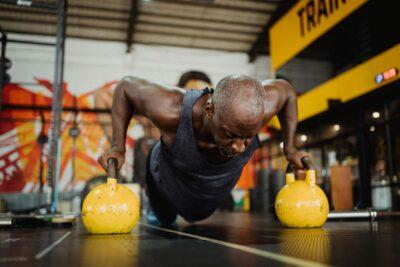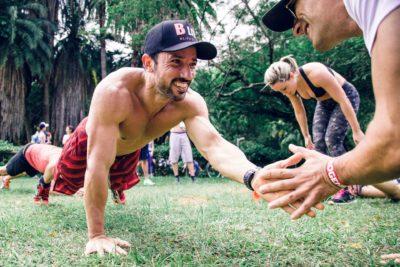For the last number of years, it’s becoming more and more important to invest invaluable content for your audience. When trying to market a product or service, if you explicitly attempt to “sell” the person they will most likely be turned off. However, if you are actually trying to provide value through useful and practical information that will support the product or service you are trying to sell.
For example, in Glofox our product is gym management software, so we produce practical and engaging content around every aspect of making a gym business successful, not just produce content around gym management software. In an interview with the Growth Mindset University podcast, marketer and podcaster Hala Taha refers to this type of content as “edutainment”. Basically it’s content that not only educates the reader but actually engages their interest.
Now that your fitness business has likely moved online, great content is more important than ever. And, there are a number of different ways to showcase this content, be it images, the written word, or video. In this article, we are going to focus on images – specifically live-action pictures and graphics. We will look at the key elements of great images and graphics, the tools you need to create them, and the most effective types of visual content you can use for your marketing.
Skip ahead to:
- What Are the Key Elements of Good Images and Graphics?
- 3 Key Tools for Creating Images and Graphics
- 4 Images and Graphics to Create for Your Social Media Strategy
What Are the Key Elements of Good Images and Graphics?
The main platform you will be using visual content is social media. As we have laid out in our go-to guide on fitness marketing, Facebook and Instagram are the best platforms for building a dedicated audience for your fitness business
Why?
Two reasons. Firstly, it is where the majority of your members and potential members will be spending a good portion of their day. This will be increased now that most are in lockdown. Secondly, fitness is highly visual in nature, and both Facebook and Instagram are highly visual platforms, where the most engaging, entertaining and educational visual content is the most successful.
So to give you the best chance of success with your social media strategy, let’s take a look at the key elements of good images and graphics
The Correct Dimensions
With any image or graphic you share on social media, you need to ensure that it is the correct dimension for the platform you’re publishing on. Here is the size for the main platforms you will be using:
- Facebook: 1,200 x 628
- Twitter: 1,024 x 512
- LinkedIn: 800 x 800
- Instagram: 1,200 x 1,200
Sometimes these dimensions can change so this is not a final list. Test to see what is working and what’s not. Some image editors like Canva (which we will go into more later) will have templates for each dimension.
Being on Brand
Another key aspect of growing a studio that we have covered in depth is how to build your brand. A lot of thinking goes into the development of a brand and it needs to remain consistent across all your marketing materials. For images, this could mean having a certain color tone that instantly makes your pictures recognizable on a busy social media timeline. For graphics, this could mean having the same font and color combinations that match your brand.
Think of major fitness franchises like Orangetheoury and F45. Their visual branding is distinctive and instantly recognizable and evokes an emotional response from the person that views it. Emotions drive connection to a brand more than anything else. When you have figured out the emotions you want to evoke your brand, consistency is the key to achieving this emotional connection.
3 Key Tools for Creating Images and Graphics
There are three main tools you need to create images and graphics for your social media. First, you need a camera or smartphone to capture images. A simple graphics editor is the next tool you need and lastly a stock images site is also useful. Let’s take a look at these tools in more depth.
DSLR or Smartphone camera
In our article that looked at the 8 Best Cameras for Filming Sport and Excercise, we looked at the different types of cameras you can use for filming workouts. One of the most popular and affordable types of camera is the DLSR, which not only takes video, but also image. Canon and Nikon are the most well-known and reliable cameras on the market. Although the DSLR cameras can be cumbersome if you need to readjust the camera to different angles, you can get much more use out of this camera due to the interchangeable lenses – and therefore leading to several different options in terms of image variation.
If you feel you don’t have the skillset (or the time to learn the skillset) to operate a DSLR camera, then you could also use a smartphone camera. Most of the latest Android and Apple smartphones have cameras that will take quality pictures with ease.
Graphic Design Software
While you could hire a graphic designer to make a lot of your designs, it might be an unnecessary expense. Luckily, there are a number of free software out there that can help you bring your designs to life without needing a graphic design degree. Here is a short overview of the most popular software, Canva.
Canva: Founded in 2013, this Australian graphic design tool has exploded in popularity in recent years and its easy to see why. Even for the design novice, this software is quite easy to use and gets effective results. You can drag and drop elements on to a template and templates comes in standard social media dimensions.
The Top 10 Barriers
Slowing Your Fitness
Business Growth
Discover more A great thing about Canva is that you can select your exact brand colors. Another great aspect is the range of designs you can make with templates for organic posts, social media ads, website banners, infographics, and posters. Canva is free but can also purchase a subscription to access more features
Stock Image Websites
Authentic imagery that you capture yourself is definitely recommended. The reason for this is that authentic imagery of what you do has a better chance of actually connecting with an audience than stock images. However, sometimes you may have to turn to stock imagery if you can’t capture real images just yet. As well as that for some parts of your website you may have to use stock imagery. Stock images need to have a license that allows you to use them freely in your marketing and there are a couple of free sites you can use, including Pexels, Unsplash, and Pixabay.
4 Images and Graphics to Create for Your Social Media Strategy
There is a number of different images and graphics that you can create for your social media strategy
1. Workout Tutorials
As we said at the beginning of this article, any content you make needs to have value. Communicating value engages an audience and one of the best ways to do this is with a workout tutorial. Now that the majority of your members are at home, this will be a highly useful piece of content.
Use them as a supporting piece of content for your pre-recorded or live-streamed content. It’s best to keep these tutorials simple and easy to fit onto a square or rectangular graphic, depending on the platform you are posting on. Take a look at some of these examples from Workout Smile for some inspiration.
2. Testimonials
According to experience management platform Qualatrics, 91% of 18-34 year olds trust online reviews as much as personal recommendations. This shows the power of the reviews people see online. It’s no surprise really. Consider the last time you looked for a hotel or restaurant. The likelihood is that you checked out the reviews before making a decision. This is backed up by another stat from Qualatrics, which states that 93% of consumers say that online reviews influence their purchasing decisions.
Encourage members who you feel are having a positive experience in your gym to give a review or a testimonial. Use the best quote from this, along with a picture of the person to create a visual testimonial. For some advice on how to actually collect great testimonials – check out this guide we have written.
3. Nutrition Tutorials
Another key piece of content that can bring a lot of value to the reader is nutrition tutorials. A big theme to come out of the recent transition to online fitness is how to keep members accountable with there nutrition. Even if the members are doing regular workouts, they may have a tendency to snack if they are on lockdown.
Creating simple infographics that layout the guidelines for good and bad nutrition will help your members make better choices which in turn will help them achieve their goals. As well as that, it builds your reputation as an authority on the topic. Take a look and some of the insightful content shared by Rushe Fitness, a studio based in Ireland.
4. In Studio Content
Unfortunately in the situation, we find ourselves in now it’s not possible to capture images of live classes going on in your studio. This is a good piece of visual content as it shows the day to day life of what happens in your studio.
However, now you may have to improvise as your classes go online. Think of things like screenshots of all the members working out over Zoom, trainers mid exercise during class or individual members sending in post-workout pictures. If you are planning to sell memberships online, you need to showcase what your studio’s experience is actually like.
In Summary
Now that fitness businesses have largely moved online, it’s more important than ever to have good images and graphics to showcase valuable content and information about your studio.


